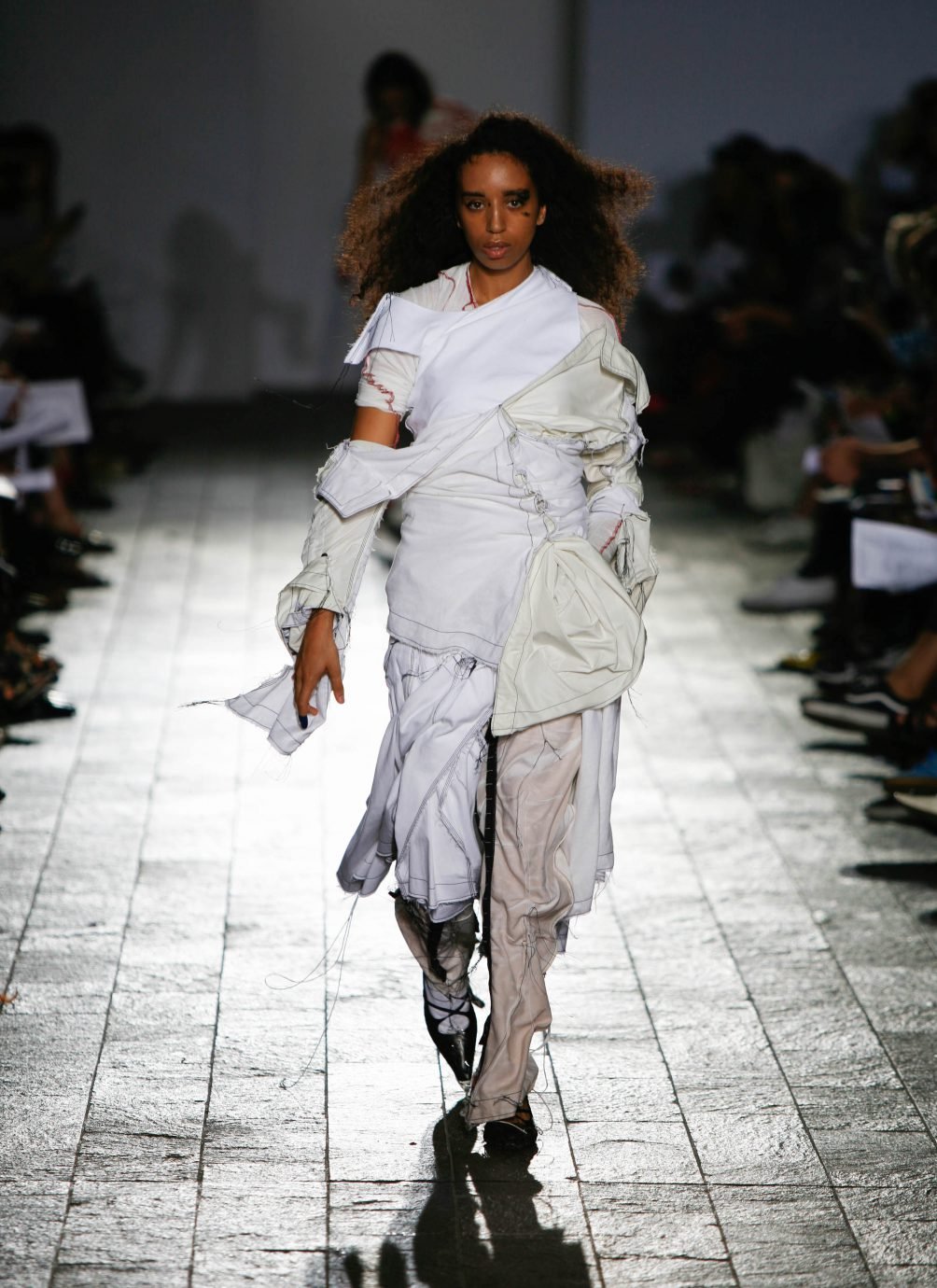We should talk about your new body of work. It’s really beautiful.
It’s the more functional, wearable everyday “Johanna”-part. We have more trousers and shirts, things that can actually be imagined to be worn on a daily basis.
For you, a capsule collection means something accessible for everyday life?
I would say that it is not a full collection. There are eight looks, but they consist of four to five core pieces. I’d say it’s very condensed, and I centered this around a shirt which can be worn either as a traditional shirt or an overshirt. Similar to a jacket.
“Maybe that’s being a creative person. Constantly thinking your work is horrible. I feel like making new things just to prove to myself that I am not as bad as I think. This cycle kind of keeps you going. ” – Johanna Parv
Are you talking about the asymmetrical shirt jacket you have that’s very long?
Yes. And then there’s another one in a different material that’s really stretchy and comfortable to move around in. There are pockets on the arms and in the back, there will be an extension for the puller to help you open the zipper on your own. There are calypsos and swimsuits. The thing is, it’s all in development. I’m still finishing the pieces now to make them even better. Looking at my current lookbook, I feel like I already want to make a new one.
It’s really a personality trait that you are never satisfied with, right?
I do think so. I just recently called my mum and told her how I feel absolutely embarrassed, and I want all my team to stop working. We are basically hiding what we’ve worked on for the past three months, because we don’t think it’s good enough. “Johanna, this is crazy. Stop thinking like that,” my mum said and added that she saw a poetess on TV who was very embarrassed about her first book. Yet, that’s the work she’s most famous for. Maybe that’s being a creative person. Constantly thinking your work is horrible. I feel like making new things just to prove to myself that I am not as bad as I think. This cycle kind of keeps you going.
Do you think this is why we mass-produce everything? Because everyone thinks they’re shit, so we keep on with it?
I don’t think mass production has to do with that. Mass production is straightforward business. It’s a cycle of capitalism more than an emotional need. To keep your business going, numbers must increase.
At this point right now, do you feel unsatisfied with the collection? It’s not at the level you want it to be?
I would say that I am really satisfied with half of it. The other half, I would like to rework. Materials and finishings are what I would like to redo. I already have new looks in my head. It’s not a question of not being satisfied with what I have, it’s more about wanting to move forward with new ideas. I am happy that I got to do it in such a short period of time. In June or July, I started thinking about it, and August was when I started working. Everything was finished by mid-October. That’s really fast, actually mental.
So, when you started your work, were you really focussed?
I arrived from Estonia on 20 August and started toiling. I did two weeks of toiling for the shirt. To be honest, some toils of the pieces happened last year. I had some patterns, but things needed to be finalised. What I really focused on was the shirt. Originally, it was supposed to be wide and big. Then, I realised that I wanted a narrow shirt as well, but there was no time for the development of two pieces. I was really aware of my time



























